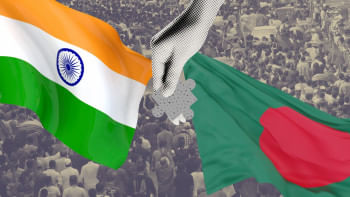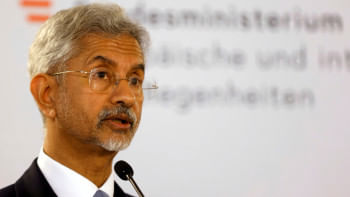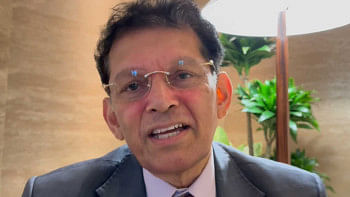Are Bangladeshis anti-Indian?

Nearly two decades ago, I visited an office in Dhaka and overheard a brief conversation between a superior and their subordinate. The former was telling the latter that they had planned to go to India for Eid shopping but couldn't make it because they were down with flu. Honestly, up until then, I was not aware that there are Bangladeshis who regularly visit the neighbouring country for such purposes.
We often hear that Bangladeshis hate India and that this becomes obvious especially during international matches involving the Indian cricket team. But what about Bangladeshis who travel to India just for shopping and buy products which are available in their own country at equally or more reasonable prices? Do they hate India? Given that they earn money in Bangladesh and spend it in another country probably without much thinking, can we ask the following question: Do they love their motherland for which innumerable people laid down their lives in 1971 and then again in 2024?
Without questioning the patriotism of these India-going and shop-in-India Bangladeshis, we can also ask a set of questions from the opposite direction: are there Indians who receive salaries from their country but do their shopping in Bangladesh? Do Indians love Bangladesh? Or, are Indians anti-Bangladeshi?
The above red herring is intended to initiate a discussion on the question if Bangladeshis are anti-Indian.
The prefix "anti" is generally associated with a sense of hostility and antagonism. But do Bangladeshis have the power—political, economic, diplomatic or military—to be hostile and antagonistic to their behemoth neighbour which is one of the largest economies with one of the strongest militaries in the world? Similar questions can also be raised in India's relations with the people of its other neighbours. Are they also anti-Indian?
I am wondering about these questions because in media parlance, the concept of anti-Indianism is often used to characterise the attitude of Bangladeshis towards India. This unjust, populist accusation that Bangladeshis are anti-Indian has spilled over in academic discourse too.
I have come across journal articles where academics, who are otherwise well-trained, do not hesitate to caricature and stereotype Bangladeshis as anti-Indian. I have read essays, published by reputable presses, where Bangladeshis are routinely associated with phrases such as: "anti-Indian sentiments," "anti-Indian feelings," "not just anti-Indianism but anti-Hinduism," "anti-Hindu feelings," "anti-Indian forces," "anti-Indian posture," "anti-India plank," "anti-India stand," "anti-Indian machinations," "anti-Hindu violence," and "anti-Indian rhetoric." By the way, the extension of the rhetoric of anti-Indianism to anti-Hinduism is premised upon the assumption that India is a Hindu country even though constitutionally it is a secular state (with a Hindu majority).
In terms of proportional land sharing between Bangladesh and India, no other two countries can perhaps be as close neighbours as Bangladesh and India are. Moreover, Bangladeshis who were born before the partition of 1947 were Indian. For example, my parents were born (British) Indian and died Bangladeshi and were Pakistani in between. Likewise, there are millions of Bangladeshis who are still alive and were born when the entire subcontinent was known as (British) India. They have lived under three flags and have embraced three nationalities—(British) Indian, Pakistani, and Bangladeshi. That is to say, India is not geographically and spiritually far removed from the people of Bangladesh.
But what instilled a sense of horror in Bangladeshis that may have given them reasons to dislike the Indian establishment and for which anti-Indianism is associated with them?
In order to understand the recent surge of so-called anti-Indian views among Bangladeshis, we need to examine the misrule that shipwrecked their country for over a decade on successive Indian governments' watch.
For fifteen and a half years from early 2009 to August 5, 2024, Bangladeshis were crumbling under the juggernaut of Sheikh Hasina's fearsome and self-serving regime. Under Hasina's mafia-style fascist rule, they lost their right to life and death with dignity. Occurrences of extrajudicial killings and enforced disappearances became the main instrument of the Hasina administration to rule Bangladesh and to keep its population under subjugation. Family members of many victims didn't even have the opportunity to observe funeral rites for the dead. Nor were they able to properly mourn their loved ones or accord them a dignified burial. There were many instances where government forces killed citizens and concealed the dead bodies, and bereaved family members were given an opportunity to receive the remains of the deceased only after agreeing to say in public that their loved ones died of heart attacks, strokes, or other health complications.
Detailed information about the existence of a network of secret torture centres, called Aynaghar or the House of Mirrors (ghost houses), that government forces set up across Bangladesh under Hasina's leadership is now emerging. We are gradually grasping the fuller extent of post-mortem drowning or dead body dumping cases orchestrated by the regime.
On the economic side, financial institutions, including Bangladesh's central bank, were plundered and ruling party high-ups and their cronies siphoned off money to purchase expensive properties in foreign destinations and/or to deposit into their offshore bank accounts. People were forced to pay high prices for food items and other necessities in order to satisfy the greed of those in power. In the name of megaprojects, ministers and their subordinates and henchmen fattened their pockets.
All these and many other instances of human rights violations, corrupt practices and financial crimes continued unabated because the regime didn't need public support to cling to power. It hardly practiced even a modicum of democracy. It ruled through a combination of repression and fake/nocturnal elections one after another, and any form of dissent was met with violence, persecution, custodial torture or death in police custody.
It is common knowledge in Bangladesh and beyond that the Hasina regime remained in power undemocratically for such a long time almost solely through India's covert and overt support. As, in his 2024 book Pathways of Autocratisation, Ali Riaz argues that "Bangladesh's autocratisation process" under Hasina was "influenced by the overall global political situation, but… accentuated, perhaps succeeded, because of its neighbour India's unqualified support for" her since 2009 (pg 62). Unfortunately, India's patronisation of autocracy in Bangladesh is often given an innocuous label—a strategy to maintain "a stable regional political system" even if to the detriment of Bangladesh.
After a months-long intense struggle known as the July revolution and at the expense of thousands of lives and limbs, on August 5, 2024, Bangladeshis collectively removed Hasina's oppressive regime (she fell and fled to the country whose interests she seemingly espoused). Now a constant barrage of allegations has been mounted against Bangladeshis that they are anti-Indian. In other words, the liberation of Bangladeshis from oppression is being perceived as going against India's interests.
But why?
During Hasina's fifteen-and-a-half-year rule, she did everything to accommodate Indian demands, regardless of what was in Bangladesh's national interests. Trade deficits in favour of India increased, Bangladesh gave India transit benefits and access to rivers and ports free of cost while buying electricity from it at an outrageously high price. For these and many other reasons, Bangladesh became a greater source of remittances for India. What is more, for decades Indian forces have been killing Bangladeshis at the borders on a regular basis while the relations between the two countries were being described as "golden" during Hasina's rule. Considering these and other examples, Bangladesh was having a relationship with India that was heavily slanted in favour of the latter.
Bangladeshis simply wanted this "lopsided" relationship to end. Does this make them anti-Indian?
Dr Md Mahmudul Hasan is professor in the Department of English Language and Literature at the International Islamic University Malaysia. He can be reached at [email protected].
Views expressed in this article are the author's own.
Follow The Daily Star Opinion on Facebook for the latest opinions, commentaries and analyses by experts and professionals. To contribute your article or letter to The Daily Star Opinion, see our guidelines for submission.


 For all latest news, follow The Daily Star's Google News channel.
For all latest news, follow The Daily Star's Google News channel. 








Comments